What to do when Weed Killers become FLOWER Killers:
We invest our labor, expenses, and passion into our landscape, flower, and vegetable gardens with expectations of horticultural success! As the season progresses, reality sets in, and we endure the challenges from those who share an attraction to our plants that result in their gain and our loss. In our recent postings, we’ve detailed the woes from deer pressure, and among other things, how we can combat their feeding selection. We also recognize that insects, disease, weather, and critters (rabbits are a close second on the list after deer) are also part of the gardening experience. There is a wide range of methods to protect against the above from professional services, organic approaches, herbicides, folklore concoctions, and home remedies that rival Monty Python humor.
Doubt us? Just explore the decadence YouTube offers from “expert” gardeners. On that matter, if we haven’t stated it before, always go to your state’s Agricultural Extension Service (“Home and Garden” is a typical part of the search). Every state has a Land Grant college that provides the service for no charge. They base their recommendations on valid research. Once you have the truth, then you can be advised on what Moe in Plattsburg, Georgia discovered when he poured moonshine on his Rutabagas.
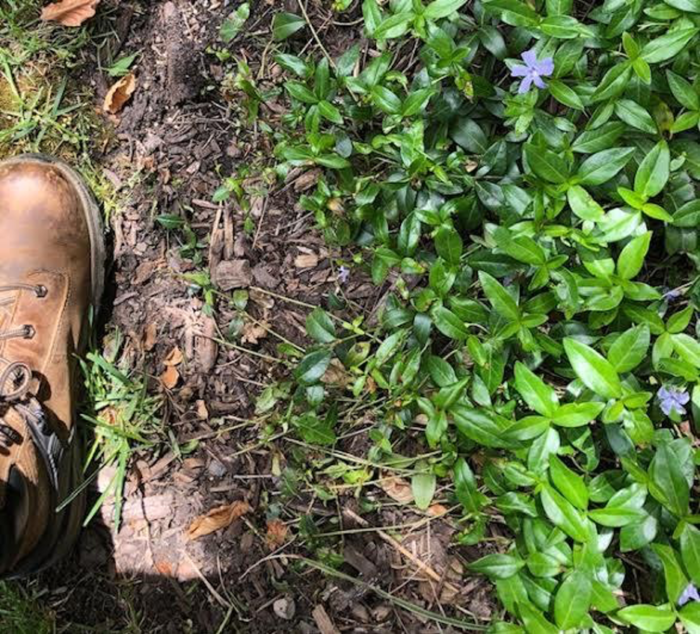
Back to the issue of protecting our plants against the forces of nature. For most circumstances, we can find methods that can reduce the damage and gain acceptable results. The real disappointment, though, comes with chemical damage from herbicides. We might successfully protect against all previously attackers discussed then lose our plants to a careless shot of RoundUp or 2,4-D. Full disclosure here, over my nearly 40 years of practicing horticulture, I have seen and know herbicide damage first hand. Years ago, in the early phases of my hands-on skill development, regrettably, some plants met their demise from my application of weed controls. I considered my actions co-lateral damage because in my pursuit to eliminate weeds, some of the good plants got included in the application spray of herbicide. Not good. Perhaps the only benefit was to observe the effects of herbicide on plants which I have seen repeated by others somewhere year after year.
What does damage from herbicides look like on plants?
Symptoms of damage from weed controls will vary from in plants as well as from the herbicide chemical used. We’ll focus on the most common. In many instances following contact with the herbicide, plants may grow in a contorted, twisted manner all the time fading and eventually wilting. Stunted and stubby growth is a symptom that may not kill the plant but prohibits it from developing to its normal capacity. Some herbicides can cause spots that brown and die. Others cause the plant to go off-color, yellow and drop leaves or wither. Though there are exceptions, most of the above are not typical of natural decline causes such as nutrient deficiency, drought, critter, insect or disease damage.
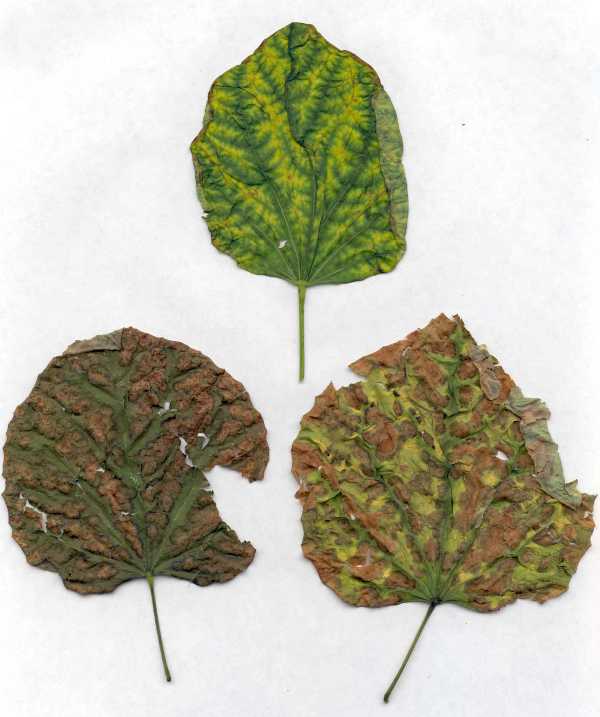
Herbicide damage can take the appearance of cupping and puckering of leaf surfaces that can turn to browned blotches. Many of the images included in this posting are actually from landscapes seen in the past couple of weeks.
Avoiding Applicator (human) Error
One of the more effective applications to control weeds is to apply in a broad spray pattern using smaller droplet particles (somewhat mist-like) of the herbicide liquid. This has much better coverage on the surface of the weed’s leaves and thus offers a more complete control as compared to a hard jet-like spray with larger droplet size. The problem with the mist application is that it is more susceptible to drift by the wind and being carried to non-target plants in your garden. We see this “herbicide drift” damage often near the edge of lawns. Another problem is mistaken identity, when one of your plants, due to its resemblance to a certain weed, becomes a casualty.
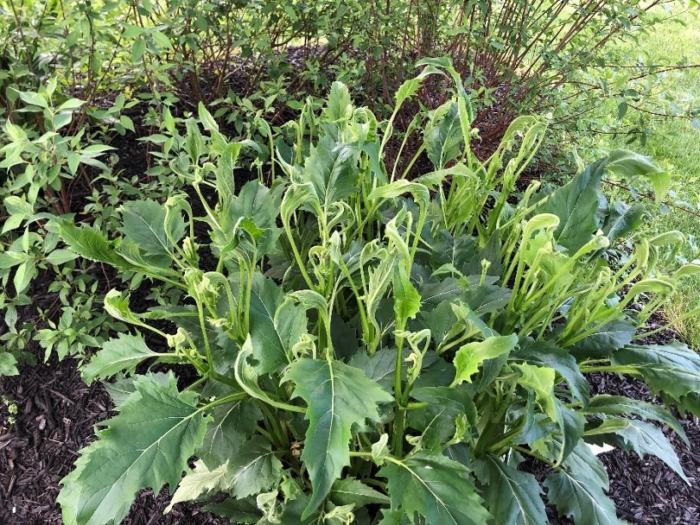
Many states require those applying herbicides (commercially and/or professionally) in greenhouses, lawn, landscape, and tree care to be licensed by the Division of Agriculture in their specific state. This means we need to study a curriculum, undergo testing every several years, and are required to participate in training seminars during the year to be updated and stay attentive to developments of our practice. The commercial applicator should be carrying a license or be under the supervision of someone who is licensed.
From past experiences, most herbicide damage is caused by carelessness, lack of skill, and not being properly trained. The consequence of misapplication is that the plants usually die and the perspective company can be held accountable. In cases of significant damage, herbicide presence can be determined by a lab (refer to your state’s dept of agriculture for sources). In most situations though, from the distinct appearance of the foliage following contact with the chemical ranging from two to ten days, the damage is distinct and the cause predictable.
What if you are the applicator and accidentally spray a weed control on one of your “good guy” plants?
As soon as possible, with a hose spray the foliage thoroughly with water. If a hose is not handy, douse with a bucket of water. Fortunately, in many cases, we’ve found if caught soon enough that if the herbicide has not dried on the leaf surface, there’s still a chance to get it off and away before the chemical penetrates into the plant.
-
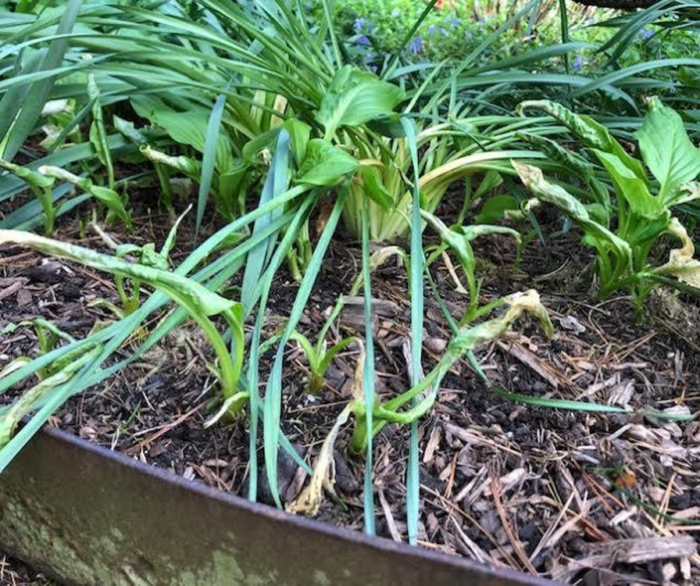
Vinca -
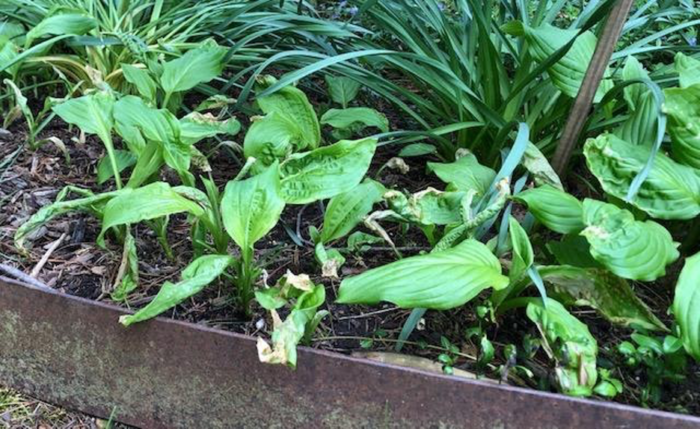
Hosta -

Cup Plant
-Rob McCartney, Horticulturist
Please feel free to contact me with any questions or for more info at: [email protected]




